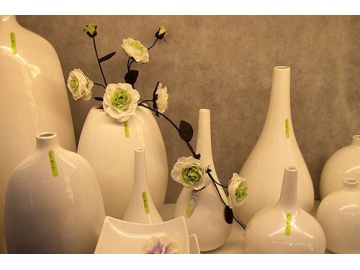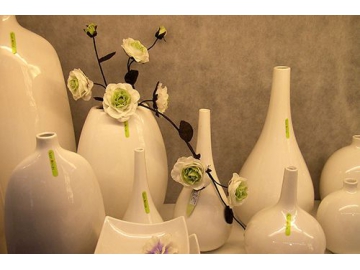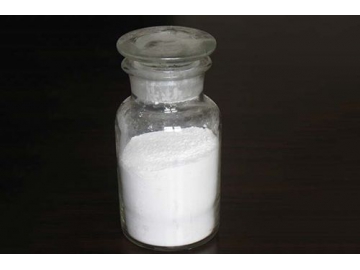Sodium Carboxymethyl Cellulose (CMC) for Ceramic
Landoil is known for its expertise in CMC production, testing and application technologies, and capable of providing premium quality CMC products with cost-effective solution for the ceramic market. We strive to earn the trust of global ceramic production companies with expert support and excellent service.
CMC can be found in a variety of applications in the ceramic industry, it functions as a thickening agent, binding agent and suspending agent in ceramic mass, engobes, glazes and color. CMC used in ceramics can harden unfired ceramic glazes and increase the workability of the ceramic product.
Using CMC in Ceramic MassWhen it is used in the ceramic mass, CMC acts as a binder and an enhancer to increase the bonding strength and enhance the plasticity of the clays. The addition of CMC helps to achieve better water retention of the ceramic therefore preventing typical issues such as drying and cracking.
Using CMC in Engobe and Glaze- Maintain the dispersion stability of ceramic glaze;
- Improve the glaze surface tension;
- Slowing the rate of dissolution from the glaze into the mass;
- Improve the glaze smoothness;
- Prevent cracking and printing fractures caused during transportation;
- Reduce glaze pinhole after sintering;
With its properties of stabilizing, suspending, bonding and thickening, CMC plays a vital role in decorative glazes:
- High water solubility, will not cause blocking;
- Excellent rheological properties and printability, ensuring smooth printing operation;
- Good lubricating property;
- High compatibility with other glaze additives, providing high glaze stability;
| Type | ||||||
| Specifications | ||||||
| 1% Soln. Brookfield Viscosity (mPa.s) | 450-800 | 900-1500 | 900-1500 | 400-1000 (2% Soln. Brookfield Viscosity) | 450-800 | 900-1500 |
| 1% Soln. Brookfield SVR | ≥0.85 | ≥0.90 (2% Soln. Brookfield SVR) | ≥0.90 | |||
| Degree of Substitution | ≥0.80 | ≥0.90 | ||||
| pH Value | 6.0-8.5 | |||||
| Cl-(%) * | ≤3.0 | ≤6.5 | ≤3.0 | |||
| Loss on Drying(%) | ≤10.0 | |||||
| Remarks | * Chloride is tested by Mohr method | |||||




